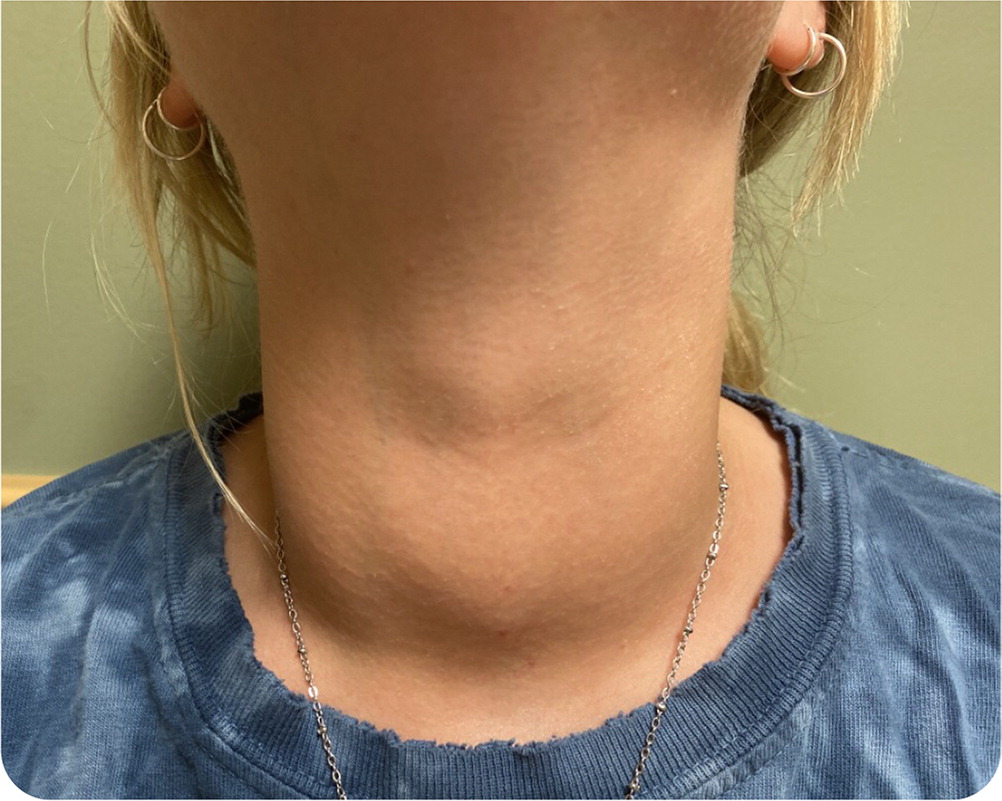
Am Fam Physician. 2024;109(6):567-568
Author disclosure: No relevant financial relationships.
A 27-year-old woman presented with a mass on the front of her neck that had enlarged over the past few months. The mass was not tender or painful, but the patient had occasional dysphagia. She reported new symptoms, including irregular menses, heat intolerance, and increased anxiety and appetite. She was not taking any medications.
Physical examination revealed tachycardia with a heart rate of 120 beats per minute and a goiter that was diffusely enlarged and nontender (Figure 1). Her thyroid-stimulating hormone (TSH) level was less than 0.007 mIU per L, and her free thyroxine (T4) level was more than 8 ng per dL (102.97 pmol per L).

Question
Based on the patient's history and physical examination, which one of the following is the most likely diagnosis?
A. de Quervain thyroiditis.
B. Graves disease.
C. Hashimoto thyroiditis.
D. Toxic thyroid adenoma.
Discussion
The answer is B: Graves disease. This autoimmune disorder is the most common cause of hyperthyroidism in the United States, accounting for 60% to 80% of cases. It occurs in 20 to 50 out of 100,000 adults and is more common in women than men.1 Risk factors include a family history of the condition, other autoimmune diseases, stress, smoking, infection, and iodine exposure.2 In Graves disease, thyroid-stimulating antibodies agonize the TSH receptor. This leads to overproduction of the T4 hormone, causing hyperplasia of the thyroid gland with a resultant goiter that is diffuse and nontender.2
Subscribe
From $165- Immediate, unlimited access to all AFP content
- More than 130 CME credits/year
- AAFP app access
- Print delivery available
Issue Access
$59.95- Immediate, unlimited access to this issue's content
- CME credits
- AAFP app access
- Print delivery available

